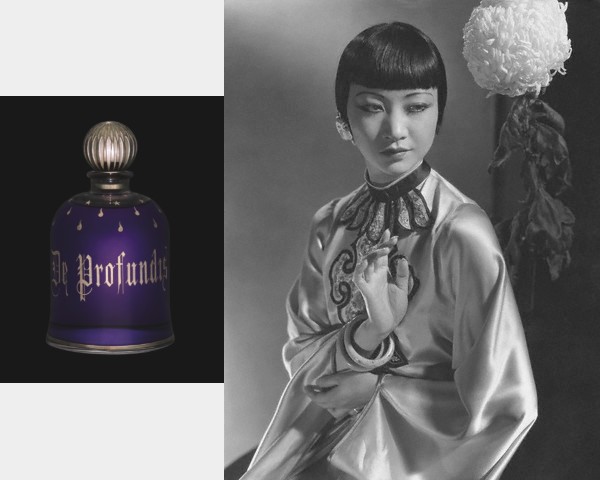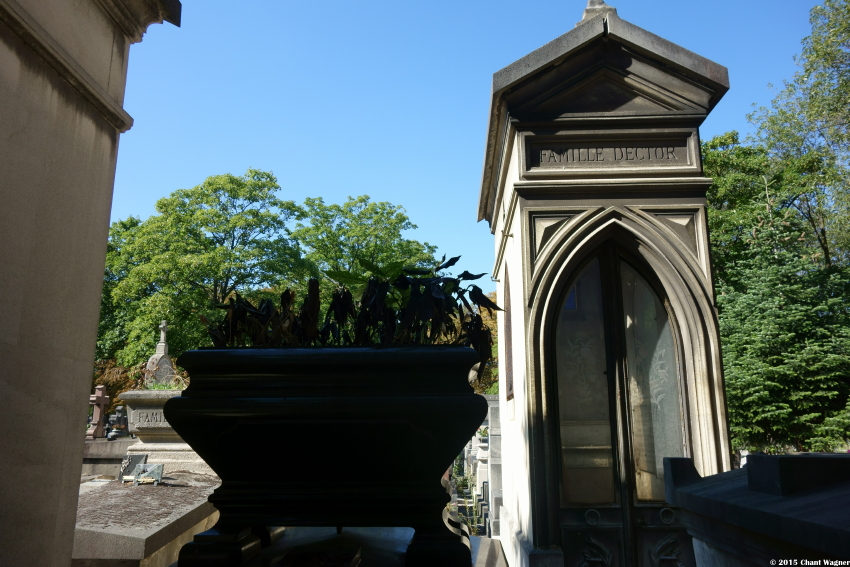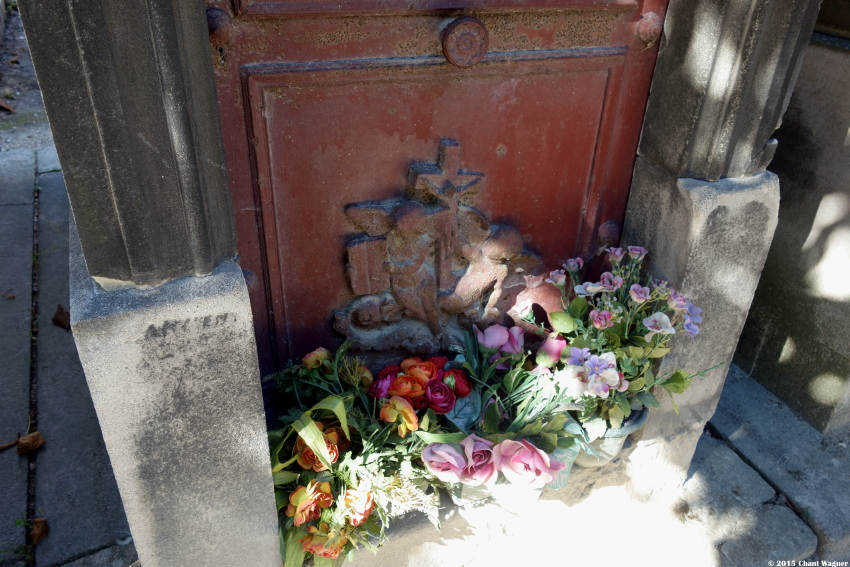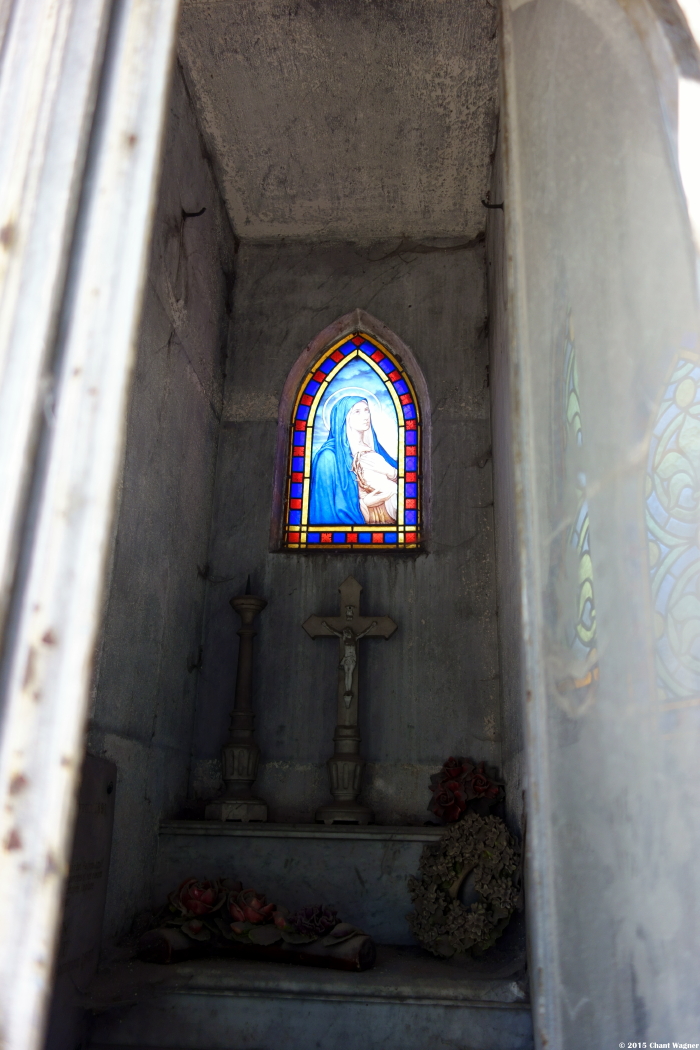Serge Lutens De Profundis (2011): The Disquieting Aroma of Adipocere - or the Creation of an Accord of Funerary Aldehydes {Perfume Review & Musings}
 Anna May Wong by Edward Steichen, 1931
Anna May Wong by Edward Steichen, 1931
By Chantal-Hélène Wagner
From the flacon de table, De Profundis by Serge Lutens lets out fresh and green notes of chrysanthemum with subtle nuances of fir resins.
In French, "sentir le sapin" means, coarsely put, that you are at an age at which death is lurking, fir being an allusion to the wood used for making the most ordinary types of coffins - as ordinary as death - and which is de facto fragrant.
Dabbed on, the perfume immediately lets out suggestions of rotting flesh and carnal putridity. Those are discreet yet unmistakenly there. It might very well be that De Profundis is the first perfume ever in history to have recreated the aroma of what forensic doctors call "adipocere", even if "mummia", a traditional ingredient of old pharmacopeias, might have been its best ready-made aromatic approximation...

Blackest Black Flowers at Père Lachaise © 2015 Chant Wagner
During the putrefaction process of the corpse, there is a stage called "adipocere", which produces what is known as "mortuary wax" or "grave wax".
Polygraph Sir Thomas Brown first described the process in 1658 in his Hydriotaphia, Urn Burial and the resulting formation which he compared to Castile-Soap. It is a process which is sometimes described as a saponification stage of the reserves of fat in the dead human body although it is a bit more complex than that.
Fourcroy in 1789, unearthing dead bodies at the cimetière des Innocents in Paris, observed that it looked like a substance in between fat and wax. Its aromatic profile is described as being rancid and sweetish.
Augustus Granville is remembered to this day for having delivered a macabre lecture at the Royal Society in 1825 presenting the mummy of Irtyersenu the so-called "Lady of the House" standing in the circles of light cast by candles made from the bodily wax harvested from the 2,600 year-old mummy.
But the perfume also wafts of what is termed sometimes "old people smell", which research has shown, exists. Empirical observation by this nose perceives it as a slightly sweetish, rancid fatty smell not too far off from the scent of wax albeit with animalic undertones and a hint of suggestion of rot, or organic maturing.
A 2001 research by Shinichiro Haze et al published in the Journal of Investigative Dermatology revealed that the only aromatic component which increases with age is 2-Nonenal also called informally "library aldehyde" because it smells like musty old books to some while others compare its smell to a commingling of aged beer, buckwheat, orris, fat and cucumber.
In De Profundis in particular, it seems that this accord has been captured by Christopher Sheldrake and Serge Lutens with aldehydes, which can smell waxy as in those old candles made of animal fat, as well as with ambergris for its hint of animalic decomposition. But there is also an insistently sweetish note of waxy "dulce de leche" mixed with fir resin as well as the the scent of "chicot" or tooth cavity.
The composition on the whole manages to suggest the process of aging of the body and even that of putrefaction of the flesh after death in a manner which is stylized enough to be bearable albeit a light gag reflex intervenes from time to time once you detect how coherent an olfactory portrayal of death it is. Just like the revolting Sécrétions Magnifiques by Etat Libre d'Orange, De Profundis provokes in you in your more lucid moments of realization an instinctive gag reflex but it is more wearable than the former thanks in part to the floral accents of chrysanthemum. Nevertheless, it functions as an olfactory memento mori.

Angels & Flowers at Père Lachaise © 2015 Chant Wagner
Serge Lutens has managed to make Death smell good, but its scent remains disquieting and dangerous like all things liminal. In order to carve out his share of revolt within the art of contemporary perfumery, Serge Lutens does not hesitate to have recourse to the categories of the revolting and the repulsive. The liminal attraction for the repulsive in perfumery is well-known, especially clear in French perfumery. In order for a perfume to smell good it must stink a little. Here, this proclivity has become more unsettling.
A passer-by, obviously a conservative family man, discovering the macabre window display at the Salons Shiseido said, turning towards his tribe, that "this is completely inappropriate" ("C'est complètement déplacé").

Stained Glass Inside a Tomb at Père Lachaise © 2015 Chant Wagner
Contemplating the visual semiotics of death seemed pretty anodine to us. Smelling the scent of death, this accord of funerary aldehydes, even if allusive in form and held captive in a beautifully aesthetic flacon turns out on the other hand to feel more disturbing an experience. Even if you were smiling at Lutens' provocation, he still got you with this funerary bouquet, thanks to the instinctual mode of functioning of the sense of smell.
See also my initial impressions on the perfume last year at the Montmartre cemetery









